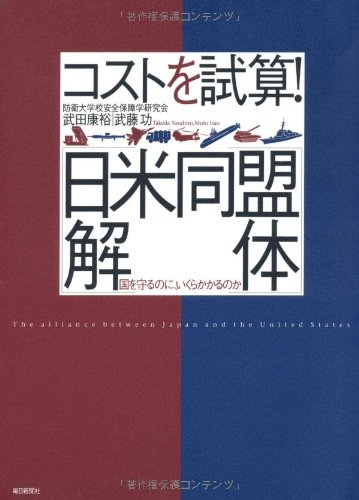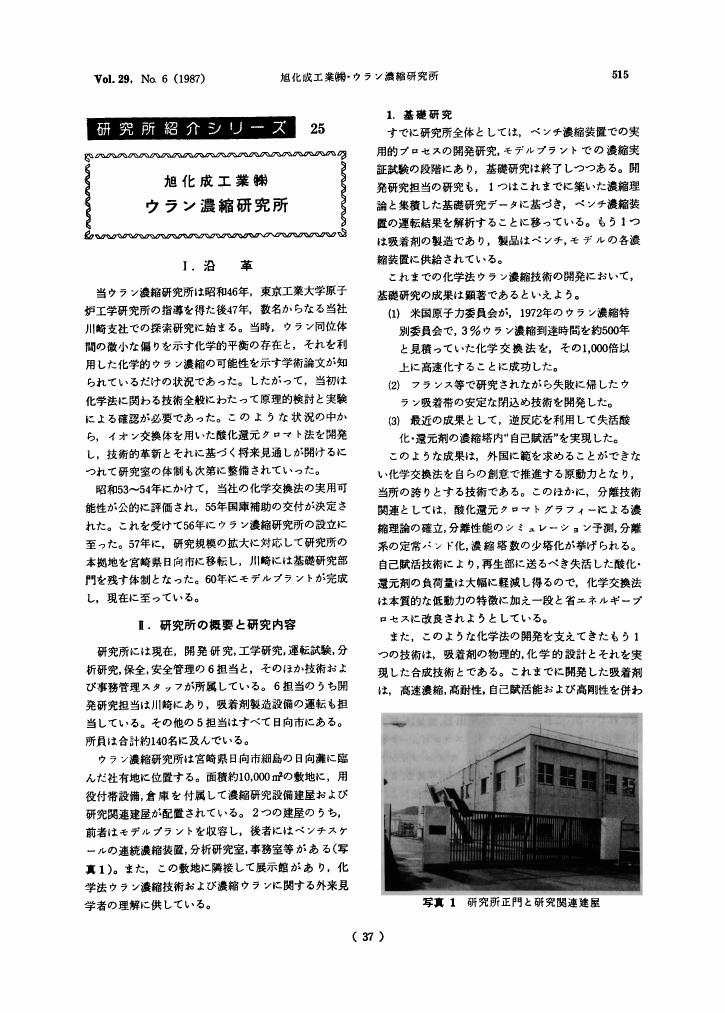9731 0 0 0 OA 経肛門的にウオッカを注入し発症した化学性(アルコール性)直腸結腸炎の1例
- 著者
- 武田 宗和 名取 恵子 諸井 隆一 原田 知幸 矢口 有乃 稲垣 伸洋
- 出版者
- 日本腹部救急医学会
- 雑誌
- 日本腹部救急医学会雑誌 (ISSN:13402242)
- 巻号頁・発行日
- vol.33, no.4, pp.735-739, 2013-05-31 (Released:2013-07-26)
- 参考文献数
- 10
要旨:【症例】37歳飲酒歴のない女性。意識障害で発見され救急搬送,既往は躁鬱病と境界型人格障害。来院時ショック状態で下血を認め,緊急下部内視鏡検査で直腸から左側結腸まで全周性・連続性の発赤とびらんを認めた。翌日,薄めたウオッカ約1L(推定アルコール濃度49%)を自ら注腸したことが判明,虚血性腸炎に準じ保存的治療を選択。8病日の内視鏡検査では直腸からS状結腸までは粘膜の修復が認められ保存的治療を継続した。4週間後,下行結腸の高度な腸管狭窄を合併したため,本人との話し合いの結果,横行結腸に人工肛門を造設することとなった。【考察】過去の報告では,アルコール注入による直腸結腸炎は保存的治療で治癒することが多いとされる。本例は高濃度のアルコールが大量に注入され広範囲に腸管が傷害された上にショック状態に陥り,腸管虚血をきたしその治癒過程で腸管狭窄を合併したものと推察された。本例における治療方針に関する問題点をふまえ文献的考察を加え報告する。
162 0 0 0 OA ライフル射撃音による急性音響性難聴の臨床的検討
- 著者
- 中屋 宗雄 森田 一郎 奥野 秀次 武田 広誠 堀内 正敏
- 出版者
- The Oto-Rhino-Laryngological Society of Japan, Inc.
- 雑誌
- 日本耳鼻咽喉科学会会報 (ISSN:00306622)
- 巻号頁・発行日
- vol.105, no.1, pp.22-28, 2002-01-20 (Released:2010-10-22)
- 参考文献数
- 30
- 被引用文献数
- 1 2
目的: ライフル射撃音による急性音響性難聴の聴力像と治療効果に対する臨床的検討を行った.対象と方法: ライフル射撃音による急性音響性難聴と診断され入院加療を行った53例, 74耳とした. 治療方法別 (ステロイド大量漸減療法群23耳とステロイド大量漸減療法+PGE1群51耳) と受傷から治療開始までの期間別 (受傷から治療開始まで7日以内の群42耳と8日以降の群32耳) に対する治療効果と聴力改善 (dB) についてretrospectiveに検討した. また, 各周波数別に治療前後の聴力改善 (dB) を比較検討した.結果: 全症例の治癒率19%, 回復率66%であった. ステロイド大量漸減療法群では治癒率17%, 回復率78%, ステロイド大量漸減療法+PGE1群では治癒率24%, 回復率63%であり, 両者の群で治療効果に有意差を認めなかった. 受傷から7日以内に治療を開始した群では治癒率21%, 回復率78%, 受傷から8日目以降に治療を開始した群では治癒率16%, 回復率50%であり, 受傷から7日以内に治療を開始した群の方が有意に治療効果は高かった. 入院時の聴力像はさまざまな型を示したが, 2kHz以上の周波数において聴力障害を認める高音障害群が50耳と多く, 中でも高音急墜型が20耳と最も多かった. また, 治療前後における各周波数別の聴力改善 (dB) において, 500Hz, 1kHzの聴力改善 (dB) は8kHzの聴力改善 (dB) よりも有意に大きかった.結論: 今回の検討で, 受傷後早期に治療を行った症例の治療効果が高かったことが示された. また, 高音部より中音部での聴力障害は回復しやすいと考えられた.
136 0 0 0 OA 一億総活躍社会と働き方改革の実現に向けた政府の取組み
- 著者
- 武田 康祐
- 出版者
- 拓殖大学経営経理研究所
- 雑誌
- 拓殖大学経営経理研究 = Takushoku University research in management and accounting (ISSN:13490281)
- 巻号頁・発行日
- vol.112, pp.105-118, 2018-03-28
安倍内閣では,人口減少,少子高齢化に真正面から立ち向かうという強い決意の下に,「一億総活躍社会」の実現を最重要課題に掲げている。その最大のチャレンジとして位置づけられたのが「働き方改革」である。働き方改革については,総理が議長,労使のトップを含む有識者からなる「働き方改革実現会議」を開催し,議論を積み重ね,合意形成した「働き方改革実行計画」を決定した。「働き方改革実行計画」においては,同一労働同一賃金の実現に向け,正規雇用労働者と非正規雇用労働者との間で,待遇差が存在する場合に,いかなる待遇差が不合理なものであり,いかなる待遇差が不合理なものでないかを示す政府のガイドライン案を示すとともに,ガイドライン案の実効性を担保するため,裁判で救済を受けることができるようにするための法改正の方向性を示している。また,長時間労働の是正として,経団連及び連合による労使合意を踏まえ,従来,上限なく時間外労働が可能となっていた臨時的な特別の事情がある場合として労使が合意した場合であっても,上回ることができない罰則付きの上限を設定することとしている。その他,テレワークや副業・兼業など柔軟な働き方がしやすい環境整備,女性・若者の人材育成など活躍しやすい環境整備,病気の治療と仕事の両立など,その他の課題についてもその方向性を示している。その後,労働政策審議会で法律案要綱が答申され,厚生労働省としては法案の国会提出を目指している。
104 0 0 0 三島由紀夫事典
- 著者
- 長谷川泉 武田勝彦共編
- 出版者
- 明治書院
- 巻号頁・発行日
- 1976
92 0 0 0 OA 全国乗り放題サブスクリプション型公共交通運賃制度の提案 料金の概算と受容可能性
- 著者
- 川合 春平 武田 陸 谷口 守
- 出版者
- 公益社団法人 日本都市計画学会
- 雑誌
- 都市計画報告集 (ISSN:24364460)
- 巻号頁・発行日
- vol.21, no.2, pp.122-129, 2022-09-09 (Released:2022-09-09)
- 参考文献数
- 24
近年、地方部を中心に人口減少やモータリゼーションによる地域公共交通の縮小が問題となっている。衰退する地域公共交通を国や自治体の補助で維持をする例も多いが限界がある。こうした地域公共交通を社会全体で維持していく場合に、市民が定額を払うことでサービスを利用・維持するサブスクリプション形平準化運賃制度の検討が重要であると考えられる。そこで本研究では地域公共交通の維持管理費を市民が負担することで地域公共交通が乗り放題となる仕組みの実現可能性を検討した。その結果、一人当たり約5万円の負担で全国の地域公共交通が維持できることが明らかとなり、市民の多くが受容できるような負担で平準化運賃制度を実現できることが示された。
88 0 0 0 IR 加藤完治の農民教育思想 : 国民高等学校運動と満州開拓団
- 著者
- 武田 清子
- 出版者
- 国際基督教大学
- 雑誌
- 国際基督教大学学報. I-A, 教育研究 (ISSN:04523318)
- 巻号頁・発行日
- vol.11, pp.47-103, 1965-03
Kanji Kato (1884-) was a unique educator of farmers who aspired to regenerate agricultural communities as the spiritual and material foundation of the nation. He was once converted to Christianity under the influence of an American missionary, but later he became an enthusiastic follower of Dr. Katsuhiko Kakei, a Shinto theorist and professor of law at Tokyo University. Kakei, having adopted Hegelian philosophy, developed a new interpretation of Shintoistic Nationalism. Thus it became Kato's mission to educate the farmers to Shintoistic Nationalism. From another approach, Tadaatsu Ishiguro, a pioneering leader in the Ministry of Agriculture and Forestry, was seeking ways to solve the serious problem of farmers' poverty, which was aggravated by a continuous agricultural crisis in the 1930's. Ishiguro attempted to implement two policies. One was a kind of reform of the landlord system (which, however, only became realized by command of the U.S. Occupation Forces after World War II), and the other was a plan to develop an educational program for training leaders in rural communities. Ishiguro was planning to establish a Japan Higher Folk School, adopting the pattern of that developed in Denmark under the leadership of Nikolai F. S. Grundtvig, an outstanding Christian leader who worked to solve that country's ruraIproblems. Kato was invited to serve as the first principal of this school, which, first in Tomobe and later in Uchihara, in Ibaraki prefecture, became the center of education of farmers in Japan. Same or similar kinds of folk schools with Kato's educational thought and method, spread all over the country. This educational movement in its early stage was expected to be like that in Denmark. It might have given the impression of sharing some of the humanistic and democratic sentiments of other new educational movements of the Taisho period, which were typically critical of the formalistic public school system (under direction of the Ministry of Education) and emphasized informal educational methods, pragmatic combining of "labor" and "education", and practical concern for social problems, etc. But in reality Kato's movement contributed to preparing, spreading and supporting the idea of Shintoistic Nationalism and fascistic ultra-nationalism in the thought pattern of the rural Japanese. Kato, when he realized that the second and third sons of poor peasants had no land to cultivate, was convinced simply that land had to be found for them somewhere in the world, and Manchuria offered the best opportunity. He persuaded military authorities, as well as the government itself, to adopt an agricultural emigration policy under which 5,000,000 poor peasants were to be sent to Manchuria. After the Manchurian War in 1931, this program became national policy, and Kato's school became the center for training the emigrants to Manchuria. Later Kato proposed sending out young boys between the ages of 16 and 19, besides the adult emigrants. At the government's request, many schools all over Japan were forced to select the best ten in ability and health among their graduating students and to send them to the school in Uchihara. They were trained there, and later at branches in Manchuria, in both agricultural and military practices. Then they were sent out to the northern frontiers as kind of colonial troops… a total of more than 300,000. Many of these capable and healthy boys, living under inhuman conditions in a severe climate, with poor food and heavy labor, suffered illness or died. Later, at the end of World War II, more than 80,000 boys, women and children were left behind by the Japanese troops and became tragic victims to the attacking Russians and Chinese. This paper is an analytical study of Kato's Shintoistic Nationalism and the nature and role of his educational movement in the historical process of modern Japan. The content is as follows: I . Preface…the purpose of this paper. II. The Folk School Movement for "regeneration" of rural communities in the period of agricultural crisis. III. Kanji Kato's Shintoistic Nationalism and his educational thought and method practiced and demonstrated through the Japan Higher Folk School Movement. IV. Emigration of farmers and youth troops to Manchuria as the result and continuation of Kato's educational activities. V. The significant nature and problems of Kato's nationalistic educational thought and movement in the history of educational thought in modern Japan.
82 0 0 0 コストを試算!「日米同盟解体」 : 国を守るのに、いくらかかるのか
- 著者
- 武田康裕 武藤功 防衛大学校安全保障学研究会著
- 出版者
- 毎日新聞社
- 巻号頁・発行日
- 2012
77 0 0 0 OA 体感劇場における揺動デザイン
- 著者
- 武田 博直
- 出版者
- 公益社団法人 計測自動制御学会
- 雑誌
- 計測と制御 (ISSN:04534662)
- 巻号頁・発行日
- vol.43, no.2, pp.161-166, 2004-02-10 (Released:2009-11-26)
75 0 0 0 OA 万葉集 : 西本願寺本
- 著者
- 佐佐木信綱, 武田祐吉 編
- 出版者
- 竹柏会
- 巻号頁・発行日
- vol.巻1, 1933
75 0 0 0 OA 経鼻薬物送達の現状と将来
- 著者
- 武田 真莉子
- 出版者
- 公益社団法人 日本薬理学会
- 雑誌
- 日本薬理学雑誌 (ISSN:00155691)
- 巻号頁・発行日
- vol.150, no.3, pp.148-152, 2017 (Released:2017-09-09)
- 参考文献数
- 24
- 被引用文献数
- 1
鼻(鼻腔)は,生体にとって呼吸器系の入り口として必要不可欠な部位であると共に薬物投与部位としても古くから利用されてきた.鼻粘膜は低分子のみならず高分子物質に対しても比較的高い透過性を示すため,ペプチドやタンパク質に代表されるバイオ医薬品の投与部位としても利用され,1980年代頃より複数のペプチド薬物が鼻腔内投与製剤化され上市されるに至っている.また解剖学的には,鼻腔内で脳に直接つながっている経路(nose-to-brain経路)があることは古くから知られていたが,近年この経路が難治性中枢疾患治療薬の脳内送達において新たに着目されている.本稿では,鼻腔粘膜の構造と機能および鼻腔を薬物投与経路とする最近の基礎ならびに臨床研究の動向について紹介する.
75 0 0 0 動画共有サイトにおける大規模な協調的創造活動の創発のネットワーク分析 ニコニコ動画における初音ミク動画コミュニティを対象として:ニコニコ動画における初音ミク動画コミュニティを対象として
- 著者
- 濱崎 雅弘 武田 英明 西村 拓一
- 出版者
- The Japanese Society for Artificial Intelligence
- 雑誌
- 人工知能学会論文誌 (ISSN:13460714)
- 巻号頁・発行日
- vol.25, no.1, pp.157-167, 2010
- 被引用文献数
- 11 2
The Web technology enables numerous people to collaborate in creation. We designate it as <i>massively collaborative creation via the Web</i>. As an example of massively collaborative creation, we particularly examine video development on <i>Nico Nico Douga</i>, which is a video sharing website that is popular in Japan. We specifically examine videos on <i>Hatsune Miku</i>, a version of a singing synthesizer application software that has inspired not only song creation but also songwriting, illustration, and video editing. As described herein, creators of interact to create new contents through their social network. In this paper, we analyzed the process of developing thousands of videos based on creators' social networks and investigate relationships among creation activity and social networks. The social network reveals interesting features. Creators generate large and sparse social networks including some centralized communities, and such centralized community's members shared special tags. Different categories of creators have different roles in evolving the network, e.g., songwriters gather more links than other categories, implying that they are triggers to network evolution.
- 著者
- 濱崎 雅弘 武田 英明 西村 拓一
- 出版者
- 一般社団法人 人工知能学会
- 雑誌
- 人工知能学会論文誌 (ISSN:13460714)
- 巻号頁・発行日
- vol.25, no.1, pp.157-167, 2010 (Released:2010-01-06)
- 参考文献数
- 25
- 被引用文献数
- 8 2
The Web technology enables numerous people to collaborate in creation. We designate it as massively collaborative creation via the Web. As an example of massively collaborative creation, we particularly examine video development on Nico Nico Douga, which is a video sharing website that is popular in Japan. We specifically examine videos on Hatsune Miku, a version of a singing synthesizer application software that has inspired not only song creation but also songwriting, illustration, and video editing. As described herein, creators of interact to create new contents through their social network. In this paper, we analyzed the process of developing thousands of videos based on creators' social networks and investigate relationships among creation activity and social networks. The social network reveals interesting features. Creators generate large and sparse social networks including some centralized communities, and such centralized community's members shared special tags. Different categories of creators have different roles in evolving the network, e.g., songwriters gather more links than other categories, implying that they are triggers to network evolution.
59 0 0 0 OA 船体抵抗低減に関する技術動向
- 著者
- 武田 信玄
- 出版者
- 公益社団法人 日本マリンエンジニアリング学会
- 雑誌
- マリンエンジニアリング (ISSN:13461427)
- 巻号頁・発行日
- vol.56, no.6, pp.934-937, 2021-11-01 (Released:2021-12-07)
- 参考文献数
- 8
- 著者
- 武田 宗和 名取 恵子 諸井 隆一 原田 知幸 矢口 有乃 稲垣 伸洋
- 出版者
- 日本腹部救急医学会
- 雑誌
- 日本腹部救急医学会雑誌 = Journal of abdominal emergency medicine (ISSN:13402242)
- 巻号頁・発行日
- vol.33, no.4, pp.735-739, 2013-05-31
- 参考文献数
- 10
要旨:【症例】37歳飲酒歴のない女性。意識障害で発見され救急搬送,既往は躁鬱病と境界型人格障害。来院時ショック状態で下血を認め,緊急下部内視鏡検査で直腸から左側結腸まで全周性・連続性の発赤とびらんを認めた。翌日,薄めたウオッカ約1L(推定アルコール濃度49%)を自ら注腸したことが判明,虚血性腸炎に準じ保存的治療を選択。8病日の内視鏡検査では直腸からS状結腸までは粘膜の修復が認められ保存的治療を継続した。4週間後,下行結腸の高度な腸管狭窄を合併したため,本人との話し合いの結果,横行結腸に人工肛門を造設することとなった。【考察】過去の報告では,アルコール注入による直腸結腸炎は保存的治療で治癒することが多いとされる。本例は高濃度のアルコールが大量に注入され広範囲に腸管が傷害された上にショック状態に陥り,腸管虚血をきたしその治癒過程で腸管狭窄を合併したものと推察された。本例における治療方針に関する問題点をふまえ文献的考察を加え報告する。
56 0 0 0 OA 論文を書くときの留意点
- 著者
- 武田 湖太郎 石井 大典
- 出版者
- 脳機能とリハビリテーション研究会
- 雑誌
- 脳科学とリハビリテーション (ISSN:13490044)
- 巻号頁・発行日
- vol.17, pp.1-8, 2017-09-15 (Released:2018-10-22)
- 参考文献数
- 10
51 0 0 0 OA 旭化成工業(株)ウラン濃縮研究所
- 著者
- 武田 邦彦
- 出版者
- 一般社団法人 日本原子力学会
- 雑誌
- 日本原子力学会誌 (ISSN:00047120)
- 巻号頁・発行日
- vol.29, no.6, pp.515-516, 1987-06-30 (Released:2009-04-21)
45 0 0 0 OA 「乳房」の図像と記憶――中国・ロシア・日本の表象比較研究
本研究は、中国における「乳房」の表象を、中華圏・ロシア・日本の各地域における表象と比較し、非西欧圏・社会主義圏における「乳房」イメージの生成、交流、変遷について明らかにするものである。分析の中心となるのは、19世紀から20世紀にかけての画報(絵入り新聞)・連環画(絵物語)・ポスターなどの図像資料、および新聞記事や文学などの文字資料である。研究成果は、株式会社ワコールの主催する「乳房文化研究会」の定例研究会「アジアにおける乳房観 Part3~中国人女性の身体意識と文化・ファッション~」において発表したほか、書籍として刊行予定である。
43 0 0 0 OA 化学交換法によるウラン濃縮 ACEP法
- 著者
- 世古 真臣 三宅 哲也 武田 邦彦
- 出版者
- 一般社団法人 日本原子力学会
- 雑誌
- 日本原子力学会誌 (ISSN:00047120)
- 巻号頁・発行日
- vol.20, no.8, pp.547-552, 1978-08-30 (Released:2009-04-21)
- 参考文献数
- 15
- 被引用文献数
- 1 1
42 0 0 0 OA 光量子コンピュータの新時代 ループ型を中心として
- 著者
- 武田 俊太郎
- 出版者
- 公益社団法人 応用物理学会
- 雑誌
- 応用物理 (ISSN:03698009)
- 巻号頁・発行日
- vol.92, no.4, pp.214-219, 2023-04-01 (Released:2023-04-01)
- 参考文献数
- 25
現在,世界各国で多彩な方式で量子コンピュータ開発が進められる中,異色のアプローチでひときわ存在感を放っているのが光量子コンピュータである.光量子コンピュータの近年の進展は目覚ましく,特定の計算でスーパーコンピュータに勝つ「量子超越性」が達成されたのみならず,大規模な量子コンピュータへ拡張可能な道筋も見いだされつつある.この躍進の背景には,光量子コンピュータの伝統的な方法論から脱却した新しいアプローチへの転換がある.本稿では,光量子コンピュータの近年の進展の背景を解説するとともに,その新しいアプローチに基づく我々独自のループ型光量子コンピュータの開発や応用について紹介する.
- 著者
- 武田 惇奨 脇山 真治
- 出版者
- 一般社団法人 芸術工学会
- 雑誌
- 芸術工学会誌 (ISSN:13423061)
- 巻号頁・発行日
- vol.57, pp.38-39, 2011-11-03 (Released:2018-12-19)






